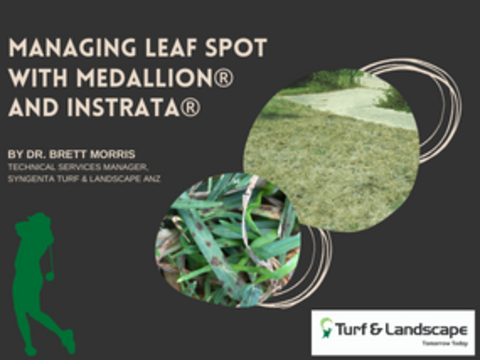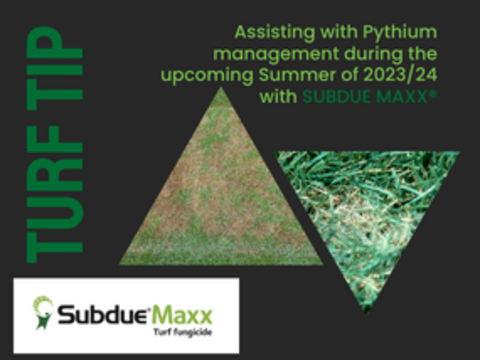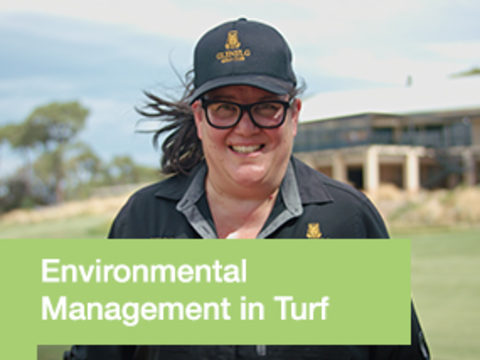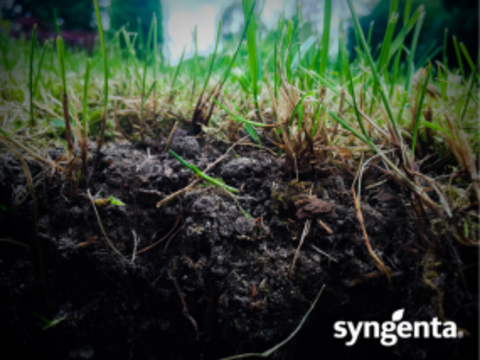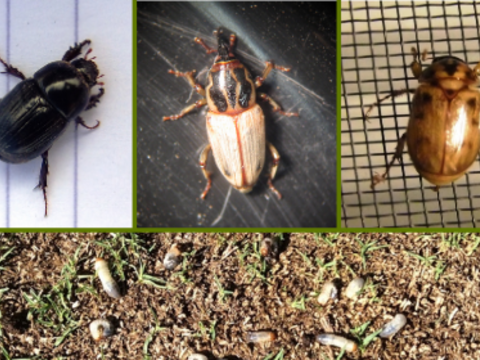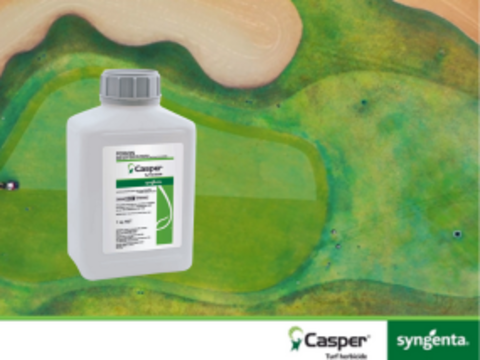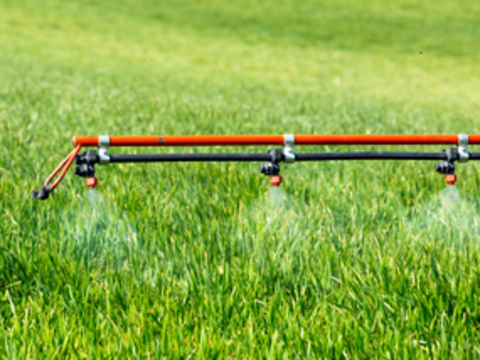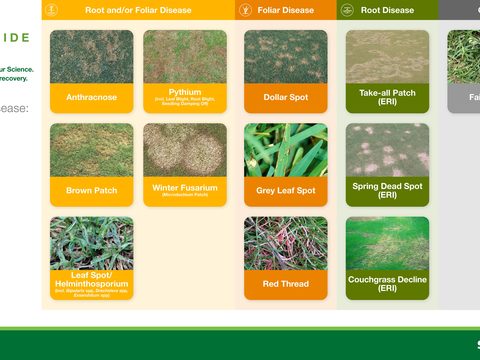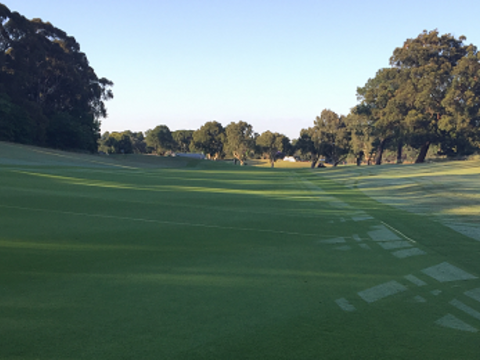Maximising results from PENNMAG® in turf production
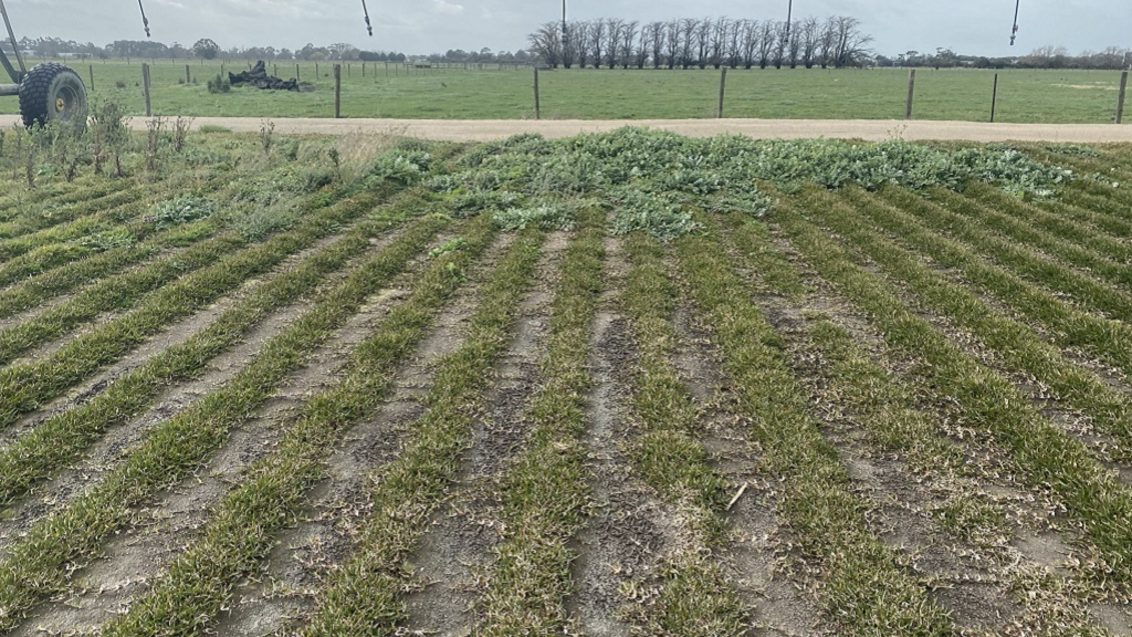
Introduction
Pre-emergent herbicides are a vital tool in managing weeds in the turf production industry. The efficient and timely use of herbicides to minimise weeds while maintaining good plant growth and health is a turf production management challenge. PENNMAG® is a useful tool when facing this challenge, allowing you to control weeds whilst the turfgrass is re-establishing post-harvest. PENNMAG® (S-metolachlor) a Group 15 (formerly K) herbicide has been developed for use in turf production, offering a turf registered, economically viable option for turf producers.
Given its unique mode of action where it is primarily absorbed by the emerging leaf of the germinating weed, PENNMAG® has a lower impact on re-growth when compared to Group 3 (formerly D) herbicides which are predominantly root absorbed and can be known to root stunt/prune. Longevity, or the breakdown or degradation of herbicides, including PENNMAG® varies with environmental and soil conditions. This article aims to summarise some of the key factors that affect how long S-metolachlor lasts between applications and how to get the best out of its use.
PENNMAG® Longevity
A single application of PENNMAG® will in most situations provide weed control for up to 8 weeks. After this, PENNMAG® will biodegrade allowing for weed seeds to germinate and a further application may be required. In general turf maintenance, we would recommend an application of BARRICADE®, however in a turf farm situation monitoring of the root growth is required before applying a long-lasting Group 3 pre-emergent herbicide such as BARRICADE®.
The processes that reduce the concentration of PENNMAG® in the soil vary depending on soil and environmental conditions. Organic matter content, microbial activity, temperature and soil moisture all influence how long the herbicide lasts. A healthy soil with good organic matter content and conditions suitable for a healthy microbial population will breakdown or degrade some herbicides faster than soils without. Therefore, different longevity could be expected on different blocks if the soils vary from loam to sand.
Based on temperature alone, application intervals may be shorter in summer and longer in winter. Laboratory testing found the breakdown of S-metolachlor was roughly twice as long at 10°C than at 25-35°C, explaining why PENNMAG® may provide longer control in winter than in summer on some properties. This should be measured and assessed at each individual location (Long et al, 2014).
Application Rates
Applied prior to weed emergence, PENNMAG® will provide up to 8 weeks control of many problematic weeds in turf in most instances. For best results, apply PENNMAG® at 2 L/ha in 750 L/ha water volume using Syngenta XC08 nozzles and follow with 3 mm of irrigation to position it into the upper profile.
PENNMAG® is registered for a wide range of weeds in both warm and cool season turf. Germination of weed seeds is primarily soil temperature driven with many common weeds such as Summer Grass germinating at soil temperatures between 12-15°C and Crowsfoot Grass germinating between 15-18°C. Weed germination can be increased further when turf is harvested and sunlight comes in contact directly with the soil surface. In Australia, plant protection labels are painstakingly assembled and the rates on the label are certified by the regulator (APVMA) based on data they receive from trial work. Half rates, full rates and double rates are used in trials to assess products.
At different rates, different issues can occur, such as turfgrass phytotoxicity and environmental run-off to name just two. When a product is first registered for a particular crop, the factors are calculated via replicated trials. In the case of S-metolachlor, it was originally registered for use in agricultural crops and not specifically on turfgrass as a crop until PENNMAG® was introduced.
Lab tests on S-metolachlor found degradation occurred at a slower rate in soils when higher concentrations were applied (Long et al, 2014). Therefore, over application or re-application may influence how long S-metolachlor lasts in the profile for weed control. Situations where over application may have occurred, either from incorrect rate or overlap may degrade slower in the soil. Applications that are re-applied before the previous application has fully degraded in the soil may also influence longevity, as a higher accumulated rate in the soil may degrade slower.
What Can I Do on My Site?
Initial applications should be planned for 8-week intervals with close observation of the area to assess and record when the weeds begin to break through the barrier. One method to assess how long pre-emergents are lasting is to lengthen the times between applications and leave an untreated area on each application to assess weed emergence. By documenting application dates and taking photos or records of untreated and treated areas you should be able to gain a better idea of how your soils and conditions are affecting PENNMAG® longevity at a concentration to control weeds and when to re-apply. It is recommended that paint be used to nominate the control area (area not sprayed). Please feel free to contact the Syngenta Turf & Landscape team for assistance in setting up a trial.
Does PENNMAG® Move?
Another question is whether S-metolachlor moves with water sideways in the profile or down site to low areas resulting in higher concentrations. Whilst PENNMAG® is more soluble and less persistent than longer lasting pre-emergents such as BARRICADE®, it will not move sideways after its initial application and incorporation into the soil. It is critical for all pre-emergent applications, that the soil is allowed to dry down after the initial application and irrigation. Once PENNMAG® has dried it absorbs to soil and significant lateral movement will cease. PENNMAG® is soluble and will move in water which is why the dry down period is critical to the success of the application. Some movement downward through the soil can also occur, as PENNMAG® moves into and out of solution in the soil during normal drying and irrigation cycles. Each time the soil dries out and re-wets a portion of the product held by the soil will release into the soil water solution becoming available to the germinating weed seed. This portion is also vulnerable to leaching if rainfall or irrigation is sufficient to push the soil water down through the profile. Movement of water sideways through the profile is very slow or negligible.
During spring 2021 Syngenta will be assessing the movement of PENNMAG® on a number of different turf farm soils to determine the best use patterns for certain soil types.
Irrigation After Application
If the irrigation to incorporate PENNMAG® into the soil surface is excessive or heavy it may move some of the product sideways on the soil surface before it can move into the soil, particularly if there is a downhill slope. On some of the heavy soils found on turf farms, a slow infiltration rate into the soil may result in sideways run-off and move the product to the cutting face or low-lying area where the active ingredient can accumulate and slow new growth.
If applying to the bare soil where sideways movement of the product is a greater risk, we highly recommend using the 750 L/ha or higher to get some movement into the soil prior to irrigation. If infiltration rate is low, it may be necessary to aerate or de-compact the soil more regularly to avoid losing products in run-off. Run-off of any product at application or irrigation should be avoided and with PENNMAG® it could result in the accumulation of active ingredient at the cutting face, ribbon or low-lying areas.
PENNMAG® the leading registered pre-emergent for turf production in Australia
PENNMAG® is a highly effective pre-emergent herbicide that is well suited for turf production. This article is written to provide a greater understanding of how PENNMAG® may perform differently at different sites. Before using PENNMAG® please always read the label and apply the product at the label rate. At Syngenta we recommend that you leave an area untreated that can be used as a control spot. This should be then used to compare the treated area versus the untreated to gain a local understanding of the level and length of control. As mentioned above this will be dependent upon:
- Application techniques: nozzles, water volume (avoiding run-off) and overlap
- Watering-in and irrigation: be sure to not flood irrigate the site after application as PENNMAG® is soluble and will initially move in water
- Temperature and soil types: differing lengths of control will be achieved depending on soil types, organic matter and temperature as these affect the degradation time of PENNMAG®.
For more information regarding the use of PENNMAG® in turf production please contact your local Syngenta Turf & Landscape Agent or your Syngenta representative or visit www.syngentaturf.com.au
Reference:
Long, Y. H., Li, R. T., & Wu, X. M. (2014). Degradation of S-metolachlor in soil as affected by environmental factors. Journal of soil science and plant nutrition, 14(1), 189-198.
ED 21-352

